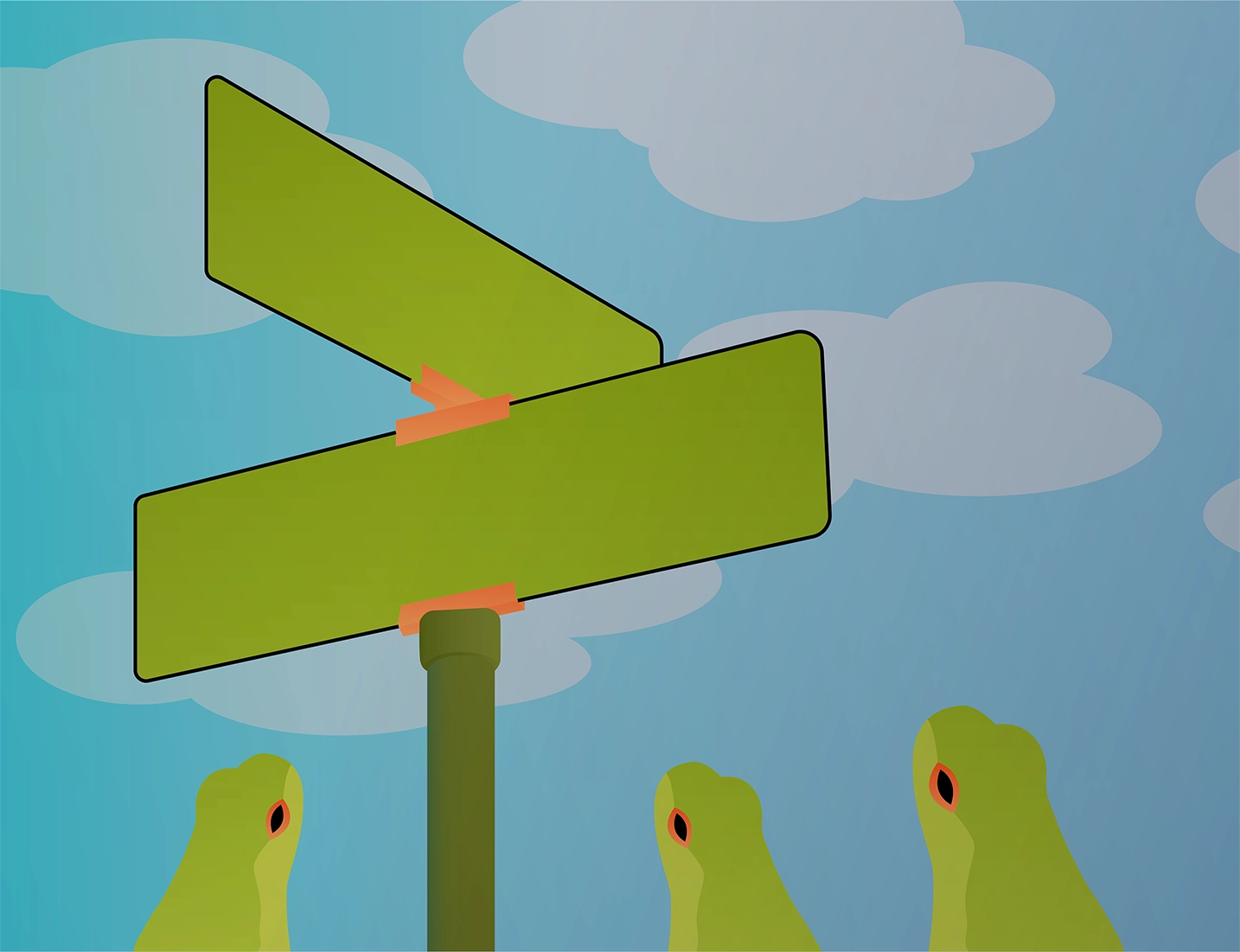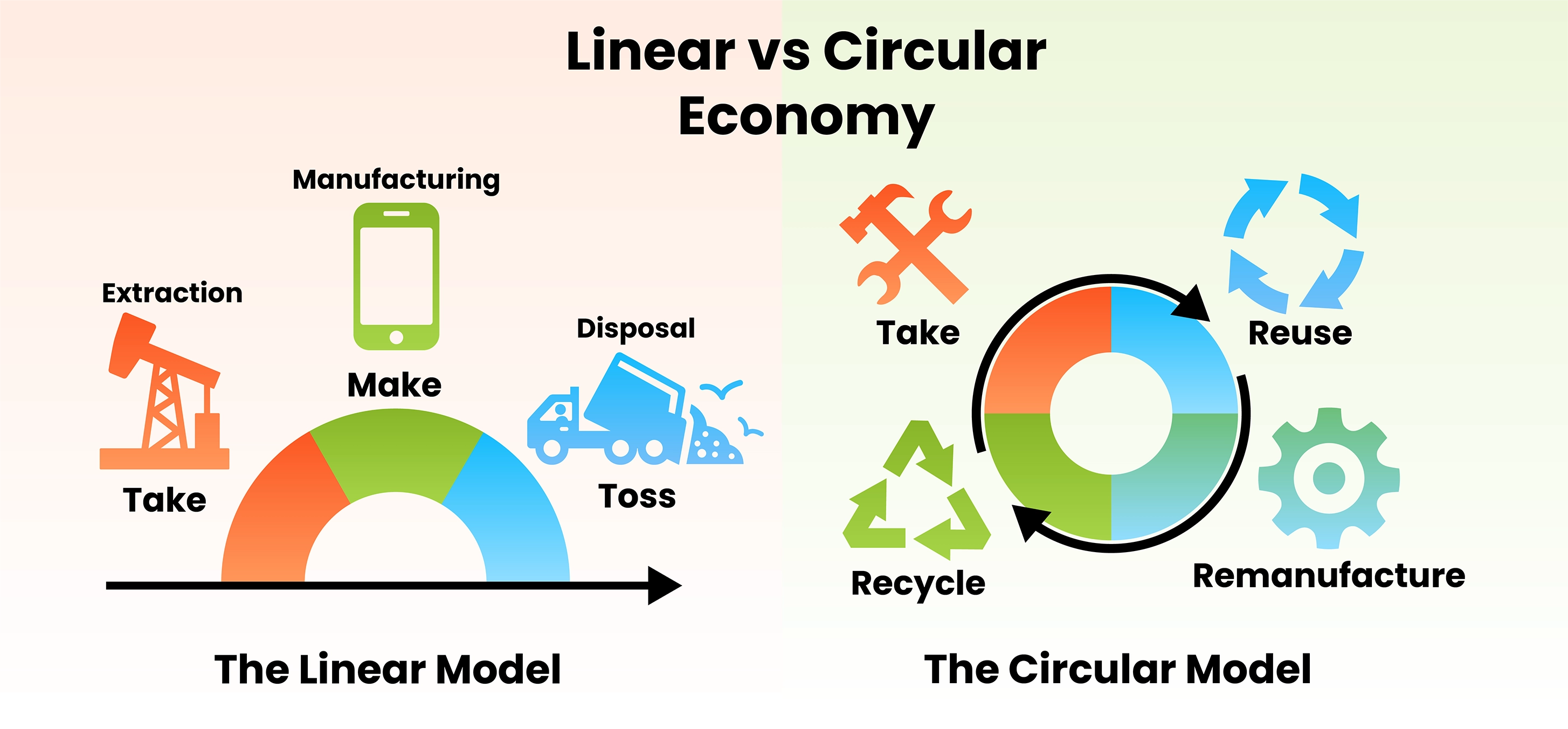Your Personal Action Plan
“We are the first generation to feel the sting of climate change, and we are the last generation that can do something about it.”
— Jay Inslee, Governor of Washington
Ready to create your plan?

Create your plan.
The following action plan will help you get started (or continue) on your climate action journey. It’s free!
Click this link or scan the QR code below to complete it online and have the results emailed to you for reference.
Seven things to think about as you prepare
The plans in this site are designed to help people meaningfully participate in the transition that is mitigating climate change, whether you use a calculator or not.
They are informed primarily by the household emissions breakdown in Canada as this identifies areas within people’s control and aligns to Canada’s Net Zero 2050 and interim 2030 reduction plan (which targets the 1.5–2°C goal.)

However, you may also want to check out a carbon calculator to see how you compare to the average and to estimate the impact of specific reductions. This is not necessary to get started and make a plan but if it is of interest, I’ve included some options below.
When using carbon calculators and detailed Carbon Footprint information consider the following:
| They cannot… | They can… | |
|---|---|---|
| • They can’t easily account for relevant local factors such as how clean your electricity is or how local or sustainable your food is, which can, in some cases have a large impact on your footprint. | • They can provide an approximation of your footprint and the relative impact of “big rock” changes. They can help you prioritize some key areas that may be relevant for you and help you flag areas you want to start with or work towards. | |
| • They cannot provide detailed, activity level accounting of your footprint. | • They can provide information about the Carbon Footprint of specific activities and products which can raise your level of awareness about relative impacts and sources of emissions. | |
| • They cannot account for the full positive impact you are making as you transition to clean energy and low/no carbon prosperity. There are many direct and indirect ways you will drive the required systemic change even if you are focused on your own footprint. One action can have multiple positive effects. | • They can give you confidence in the plan that you make through this site because the areas to address and their relative impacts will be consistent between the calculators and Canada’s climate action plan that this site relies on. |
Canadian examples:
Note: many other Carbon Footprint calculators are available that are based on US or UK data. They can give you a high-level picture but are not as accurate for Canadians.
These sources give you a sense of the detailed carbon footprints of products and activities (based on US and UK data but still informative):

• Significantly reduce your own fossil fuel use, in part by shifting from greenhouse gas energy to clean energy.

• Support systemic and societal change towards the phaseout of greenhouse gas pollution.

• Shift behaviour and habits to align with a sustainable, prosperous, abundant, low/no carbon world.

• Support the systemic/societal change towards sustainable, affordable prosperity.
Within these areas, there is a ton of freedom to choose a personal path that suits you.

Appropriate — relevant for me and my family.

Feasible — fits with my time and money considerations.

Aligned to values/goals — prioritizes alignment with other things I care about.

Flexible — allows me to grow into and/or change my plan over time.

Motivating — gives me confidence that I am actually making a positive impact.
Addressing global warming is not really about values any more than grabbing a fire extinguisher to put out a fire is. But climate action likely intersects with other things you may care about, including your social and economic values and other environmental issues.


Cost of Living, Inflation, and Taxes
The cost of living is already being impacted by climate change.
The Canadian Climate Institute estimates in a 2023 report, that climate change increases the average household’s cost of living by about $700, because of supply-chain disruptions (and consequent impact on grocery bills, for example), rising insurance costs and tax hikes to pay for disaster recovery and infrastructure repairs.
The annual cost of disasters is now in the billions and will only increase over time as climate change increases the frequency, likelihood and/or severity of extreme weather events and climate change related disasters. Climate change is also expected to increase costs due to impacts on food systems, other ecosystem services, worker productivity, business supply chains and health.
Adaptation and mitigation costs will also increase as global warming gets worse and as previous strategies to address and withstand climate change are no longer sufficient, requiring us to rely on more costly strategies.
Climate costs are real and are already being incorporated into insurance coverage analyses and Central Bank planning for its inflationary pressures. Although the energy transition also comes with inflationary risks, a delayed and abrupt future transition is riskier to the economy than a steady managed transition today.
A note about taxes: Although the Canadian carbon tax has decreased in popularity, putting a price on carbon pollution is a mechanism used in many countries to help shift behaviour and give individuals and businesses confidence in making clean energy investments.
In Canada, 90% of the tax goes back to individuals through a rebate and the other 10% goes to businesses and schools to help them transition as well. For many Canadians, there is no impact at all. The link below has a helpful calculator that shows the impact of the carbon tax on your household. Research shows that the tax is not a significant driver of the increased cost of living we have recently experienced, despite the political exploitation of this argument.
If you care about cost of living, inflation and taxes, you care about climate change and you can support government efforts to shift societal behaviour with your vote and voice.
References
Ness, R. (2023, June 14). Climate damages are inflating the costs of living for every Canadian. Canadian Climate Institute. https://climateinstitute.ca/climate-damages-inflating-costs-of-living-for-every-canadian/
Damage control report: Reducing climate impacts. Canadian Climate Institute. (2023, November 28). https://climateinstitute.ca/reports/damage-control/
Li, C., Zhang, X., & He, J. (2023, August 31). Impact of climate change on inflation in 26 selected countries. MDPI. https://www.mdpi.com/2071-1050/15/17/13108
Ens, E., & Guerin, A. (2023, November 23). Climate change is a big issue for Central Banks. Bank of Canada. https://www.bankofcanada.ca/2019/11/climate-change-is-a-big-issue-for-central-banks/
Presser, J. (2023, September 12). Extreme Weather Events. Leger360. https://leger360.com/blogs/extreme-weather-events/
Presser, J. (2023, October 4). Canada’s Climate Change Policy. Leger360. https://leger360.com/surveys/canadas-climate-change-policy/

Affordable and Accessible Housing
Affordable housing intersects with climate action in a number of ways.
There is strong alignment between developing affordable housing and taking climate action. For example:
• Smaller homes have a smaller Carbon Footprint and use less energy.
• Energy efficient homes emit lower amounts of greenhouse gases and save homeowners/tenants money.
There is also a massive opportunity to address the housing crisis and tackle climate change simultaneously by considering the following:
• Retrofitting urban buildings instead of building new avoids the Carbon Footprint of new building materials.
• Retrofitting buildings for increased efficiency reduces the building’s Carbon Footprint and energy costs.
• Promoting high density living supports the development of clean public transit, active transportation, and the protection of surrounding greenbelt and agricultural land.
• Using efficient electric space heating/cooling options in new urban and suburban homes reduces the building’s Carbon Footprint and energy costs and also avoids the cost and emissions of locked in new natural gas which can commit us to fossil fuels in the long term and/or increase the costs of transition when gas is inevitably replaced with clean energy.
• Sustainable urban planning can increase access to amenities within walking distance and encourage active and public transportation.
Home insurance: Climate change also increases home costs by increasing home insurance costs and decreasing coverage. This also increases risks to the housing market in impacted areas.
If you care about affordable housing, you care about climate change and you can take both personal and systemic action to help address the issues above.
References
Powers, L. (2021, September 9). Can Canada solve its housing crisis without making climate change worse?. CBCnews. https://www.cbc.ca/news/canada/toronto/housing-climate-crisis-federal-election-canada-1.6168563
Chung, E. (2022, February 1). Why oil and gas heating bans for new homes are a growing trend. CBCnews. https://www.cbc.ca/news/science/bans-fossil-fuel-heating-homes-1.6327113
Luymes, G. (2023, September 5). Falling ‘dominoes’: Nanaimo latest B.C. municipality to ban natural gas heating in new homes. Vancouver Sun. https://vancouversun.com/news/local-news/bc-natural-gas-heating-ban-nanaimo
Bleasby, J. (2023, December 20). Climate and construction: Fossil fuel ban resistance in North America leaves developers in a quandary. Daily Commercial News. https://canada.constructconnect.com/dcn/news/government/2023/12/climate-and-construction-fossil-fuel-ban-resistance-in-north-america-leaves-developers-in-a-quandary

Healthcare / Health and Wellbeing
The impacts of climate change on health are pervasive.
According to the World Health Organization, the annual global direct costs to health — not including health-related impacts on agriculture, water, and sanitation — will be between $2 and 4 billion by 2030. Areas with weak health infrastructure will be impacted the most.
More frequent and severe weather and climate events such as storms, extreme heat, floods, droughts and wildfires increase the risk of death, health emergencies, noncommunicable diseases and infectious diseases. Disasters pose risks to health infrastructure, delivery systems and workforces.
Climate change also poses risks to the economic and social determinants of physical and mental health including clean air, clean and accessible water, healthy soils, and food systems (including both food security/availability and food quality/nutrition) and livelihoods.
In addition, there are inequities among people with respect to the impacts of climate change on health. Certain communities and certain groups of people are more vulnerable and at higher risk to the health impacts of climate change.
For example, certain existing health conditions can make people more affected by climate events — e.g. people with diabetes are more at risk in an extreme heat event. People that work outdoors may be more at risk for heat stress.
Others may have greater difficulty accessing care or emergency assistance during a disaster. Socioeconomic factors may also make certain groups less able to withstand climate impacts, or recover from them.
Learn more about the impacts of climate change on health in Canada through the resources below:
Consider supporting or promoting the following organizations working at the intersection between healthcare and climate action:

Jobs, Economic Opportunity, and the Economy
Climate change poses both physical climate risks (risks from climate disasters and a changing climate) and transition risks (shifting to a clean economy) for a number of sectors of the economy including fishing, tourism, agriculture, forestry, energy and mining.
It also poses risks to the economies of communities that are vulnerable to the impacts of climate change including northern and coastal communities, and communities in areas prone to wildfires, floods, and other natural disasters.Collective impacts pose a risk to the overall economy and our GDP (see costs of inaction.)
Implementing climate mitigation and climate adaptation measures as soon as possible is critical to minimizing the impacts of climate change on the economy. Climate action and the energy transition also provide a massive opportunity for the creation of jobs and competitive advantage for Canada (whereas inaction can mean we will be left behind as other countries develop the innovation, skills and capacity to deliver the emerging clean economy technologies.)
Finally, a managed and just transition will ensure that the hardworking Canadians in sectors negatively impacted by the transition are supported in finding new employment opportunities.
If a healthy economy or if the impacted economic sectors are important to you, you care about climate change.
References
Council of Canadian Academies. (2019). Canada’s Top Climate Change Risks: The Expert Panel on Climate Change Risks and Adaptation Potential. Council of Canadian Academies. https://cca-reports.ca/wp-content/uploads/2019/07/Report-Canada-top-climate-change-risks.pdf
Government of Canada. (2023, May 17). Climate change adaptation in Canada. Natural Resources Canada. https://natural-resources.canada.ca/climate-change/what-adaptation/10025
Government of Canada. (2023, July 4). Canada’s Climate Change Adaptation Platform. Natural Resources Canada. https://natural-resources.canada.ca/climate-change/canadas-climate-change-adaptation-platform/10027
Sawyer, D., Ness, R., Lee, C., & Miller, S. (2022, September). Damage Control: Reducing the Costs of Climate Impacts in Canada. Canadian Climate Institute. https://climateinstitute.ca/wp-content/uploads/2022/09/Damage-Control_-EN_0927.pdf
Warren, F., & Lulham, N. (2021). National Issues Report 2021. Canada in a Changing Climate. https://changingclimate.ca/national-issues/chapter/overview/
Government of Canada. (2023, May 25). Sustainable Jobs Plan. Canada.ca. https://www.canada.ca/en/services/jobs/training/initiatives/sustainable-jobs/plan.html
Guldimann, C., & Powell, N. (2023, March 29). Green collar jobs: The skills revolution canada needs to reach Net Zero. RBC Thought Leadership. https://thoughtleadership.rbc.com/green-collar-jobs-the-skills-revolution-canada-needs-to-reach-net-zero/

Poverty and Social Inequality
From local to global scales there are intersections between climate change and social inequality.
Globally, climate change and poverty are intrinsically linked. The world’s poorest countries experience the worst impacts of climate change but have contributed the least to the problem.
This is in part because they are in more tropical regions, have large populations in cities including in low lying coastal regions, and/or have large populations working in agriculture which is also susceptible to climate change.
Not only are they more likely to experience extreme weather events, flooding, and drought, they are also the least equipped to adapt (e.g. their homes and infrastructure may be less able to withstand extreme weather events, they may not be able to easily migrate to areas with less food/water scarcity) and they are less able to recover from loss and damage (e.g. they may not have the means to replace lost assets, and may lack insurance or government support).
If displaced entirely, they may be pushed into a worse economic situation from which they cannot recover (see migration below.) Vulnerable populations are also less able to cope with climate-related impacts on food prices, inflation, and health in some cases.
Climate change exacerbates inequality. In fact, it is anticipated that over 100 million people may fall back into extreme poverty in less than a decade as a result of the climate crisis, reversing the global progress on eradicating extreme poverty. It is impossible to do justice to this critically important subject in a paragraph but there are of course, a ton of resources to explore and ways to help.
Climate change also impacts unhoused people everywhere as they are more exposed to extreme weather events including heat waves and storms and other climate impacts such as air pollution.
If you care about global poverty and inequality, you care about climate change, and similarly when we act on climate we are also acting to ameliorate social inequality and poverty or at least increase the protection of vulnerable populations from the impacts of climate change.
References
References:
Oxfam. (2024, February 14). Climate Change and Inequality. Oxfam. https://www.oxfamamerica.org/explore/issues/climate-action/climate-change-and-inequality/
Lerín, E. S. (2024, March 1). Five Facts About Climate Change And Inequality. Oxfam Canada. https://www.oxfam.ca/story/five-facts-about-climate-change-and-inequality/
Climate change and poverty. ActionAid UK. (2023, February 9). https://www.actionaid.org.uk/our-work/emergencies-disasters-humanitarian-response/climate-change-and-poverty#footnote1_np1bgfx
Khoday, K., & Ali, W. (2018, December 19). Climate Change and the Rise of Poverty. UNDP. https://www.undp.org/blog/climate-change-and-rise-poverty
McCarthy, J. (2020, February 19). Why Climate Change and Poverty Are Inextricably Linked. Global Citizen. https://www.globalcitizen.org/en/content/climate-change-is-connected-to-poverty/
Islam, S. N., & Winkel, J. (2017, October). Climate Change and Social Inequality. UN Department of Economic & Social Affairs. https://www.un.org/esa/desa/papers/2017/wp152_2017.pdf
Hallegatte, S., Bangalore, M., Bonzanigo, L., Fay, M., Kane, T., Narloch, U., Rozenberg, J., Treguer, D., & Vogt-Schilb, A. (2016). Shock Waves: Managing the Impacts of Climate Change on Poverty. Global Facility for Disaster Reduction and Recovery. https://www.gfdrr.org/en/publication/shock-waves
World Vision International. (2022, August 8). 10 Facts about Climate Change and Poverty. World Vision International. https://www.wvi.org/stories/child-sponsorship/10-facts-about-climate-change-and-poverty
UNFCCC, Green Climate Fund, and UNDP. (n.d.). Fund for responding to loss and damage. United Nations Climate Change. https://UNFCCC.int/loss-and-damage-fund-joint-interim-secretariat#:~:text=In%20this%20context%2C%20the%20COP,economic%20and%20non%2Deconomic%20loss

Clean Air and Air Pollution
Climate change compromises air quality through increased air pollution — e.g. from black carbon, poor air quality spikes during extreme heat events, and wildfire smoke.
Air pollution is linked to disease, increased hospitalizations, and premature deaths, particularly in children, elderly people, immunocompromised individuals, and people with cardiovascular health conditions.
According to the Canadian Cardiovascular Society, air pollution causes 15,000 premature deaths per year in Canada and about 20% of cardiovascular disease deaths globally. The World Bank states that air pollution, primarily fine air particulates or aerosols, is the world’s leading environmental cause of illness and premature death, responsible for 6.4 million deaths per year, with 95% of those deaths in developing countries.
According to the Canadian Cardiovascular Society, air pollution causes 15,000 premature deaths per year in Canada and about 20% of cardiovascular disease deaths globally. The World Bank states that air pollution, primarily fine air particulates or aerosols, is the world’s leading environmental cause of illness and premature death, responsible for 6.4 million deaths per year, with 95% of those deaths in developing countries.
There is a strong interconnection between particulate air pollution and climate change because they often come from the same sources, for example coal and diesel exhaust.
In addition, air quality is compromised by wildfire smoke and global warming increases ground level ozone and airborne pollen and spore counts that can exacerbate asthma, particularly in children.
Extreme heat makes the impacts of air pollution worse in vulnerable individuals. Fossil fuels thus adversely impact air quality both directly and indirectly. There is a strong synergistic effect of tackling air pollution and mitigating climate change.
If you care about air pollution and its health-related effects, you care about climate change.
References
Climate Change and Air Quality. Climate Atlas of Canada. (2019, July 10). https://climateatlas.ca/topic/health/air-quality#:~:text=Climate%20Change%20and%20Air%20Quality&text=Canada%20has%20some%20of%20the,quality%2C%20which%20affects%20our%20health
Climate Change, Air Quality, and Public Health. Climate Atlas of Canada. (2019). https://climateatlas.ca/climate-change-air-quality-and-public-health
Egyed, M., Blagden, P., Plummer, D., Makar, P., Matz, C., Flannigan, M., MacNeill, M., Lavigne, E., Ling, B., Lopez, D. V., Edwards, B., Pavlovic, R., Racine, J., Raymond, P., Rittmaster, R., Wilson, A., & Xi, G.. (2022). Health of Canadians in a Changing Climate: Chapter 5 — Air Quality. Changing Climate. https://changingclimate.ca/health-in-a-changing-climate/chapter/5-0
Arnold, J., & Hakami, A. (2022, March 17). A Hidden Benefit of Net Zero? Cleaner, Healthier Air. Canadian Climate Institute. https://climateinstitute.ca/a-hidden-benefit-of-net-zero-cleaner-healthier-air/
Climate and Clean Air Coalition Projects. Climate & Clean Air Coalition. (2024). https://www.ccacoalition.org/partners/canada
Climate Change. Canadian Cardiovascular Society. (2023, September 13). https://CCS.ca/climate-change/
World Bank Group. (2022, September 1). Climate Explainer: Climate change and air pollution. World Bank. https://www.worldbank.org/en/news/feature/2022/09/01/what-you-need-to-know-about-climate-change-and-air-pollution
Canada Air Quality Index (AQI) and Air Pollution Information. IQAir. (2024). https://www.iqair.com/ca/canada
Buka, I., & Shea, K. M. (2019, August 14). Global climate change and health in Canadian children. Canadian Paediatric Society. https://cps.ca/en/documents/position/global-climate-change
Alahmad, B., Khraishah, H., Althalji, K., Borchert, W., Al-Mulla, F., & Koutrakis, P. (2023, April 6). Connections Between Air Pollution, Climate Change, and Cardiovascular Health. The Canadian journal of cardiology. https://pubmed.ncbi.nlm.nih.gov/37030516/

Agriculture and Food Systems Security
Agriculture contributes approximately 10% of greenhouse gas emissions in Canada so it is an important area of focus for emissions reduction.
At a high level, on broad timescales, climate change may increase the productivity and productive area of Canadian farms, however some of the current farming regions and crops may not be as suitable for farming in future and on more local space and time scales climate change will bring unpredictability in weather and an increase in climate events.
Agriculture is a sector that is highly impacted by heat waves, droughts, heavy precipitation, heavy winds, floods, severe storms, and pest infestations — so it is at high risk from the increase in likelihood, frequency, and severity of disasters and other climate risks brought on by human-induced global warming.
This impacts farmers directly of course, but also all Canadians as it is reflected in the price and availability of our food and our GDP from food exports.
Current solutions and supports are sometimes problematic and the pain is in the details. For example, increased irrigation needs in response to drought competes with other water needs — e.g. hydropower; heavy precipitation can necessitate additional energy-intensive drying processes which increases emissions; crop insurance, which is designed for occasional use will become more expensive with increasing climate risk.
Agriculture is also an important part of the solution to the climate crisis because plants and soils sequester carbon. (Regenerative Agriculture, which focuses on soil and ecosystem health, reduced carbon intensive inputs and long-term storage of carbon underground, is a key climate solution.)
Farmers need government support to adapt to a warmer climate, recoup losses from climate events and to transition to low carbon/high carbon sequestration food production practices, particularly given their low profit margins and decreasing predictability of weather due to climate change.
Suffice it to say though that if you care about Canadian farmers and the agricultural industry, you care about climate change.
Of course, the impacts of climate change are felt by farmers all across the globe and our food systems are highly globalized. Many farmers in developing countries are experiencing far more serious climate risks than we are in Canada (see poverty and social inequality above.)
And there are specific risks to foods that are staples in many Canadian kitchens. Climate change poses particular risks to many crops, including coffee, cocoa, olive oil, wines from some regions, and others.
Other foods contribute disproportionately to the crisis (Amazon raised cattle, unsustainable palm oil, unsustainable shrimp etc.) See more in Areas of Action — Your Food.
References
Government of Canada. (2020, January 31). Climate change impacts on agriculture. Agriculture and Agri-Food Canada. https://agriculture.canada.ca/en/environment/climate-change/climate-scenarios-agriculture#:~:text=Flooding%20or%20waterlogged%20soil%20due,wintering%20of%20pests%20and%20diseases
Agriculture and Climate Change. Climate Atlas of Canada. (2019). https://climateatlas.ca/agriculture-and-climate-change
Government of Canada. (2023, July 24). Agricultural Climate Solutions. Agriculture and Agri-Food Canada. https://agriculture.canada.ca/en/environment/climate-change/climate-solutions
Government of Canada. (2024, February 9). Climate change and agriculture. Agriculture and Agri-Food Canada. https://agriculture.canada.ca/en/environment/climate-change
Laforge, J., Laforge, J., Corkal, V., & Cosbey, A. (2021, November 18). Farming the future: Agriculture and climate change on the Canadian prairies. International Institute for Sustainable Development. https://www.iisd.org/publications/report/farming-future-agriculture-and-climate-change-canadian-prairies
Chung, E. (2020, February 13). Canada could be a huge climate change winner when it comes to farmland. CBCnews. https://www.cbc.ca/news/science/climate-change-farming-1.5461275
We are Farmers and Ranchers Working Together for Change. Farmers for Climate Solutions. (n.d.). https://farmersforclimatesolutions.ca/about-us
The Next Green Revolution: How Canada can produce more food and fewer emissions. RBC Thought Leadership. (2023, April 2). https://thoughtleadership.rbc.com/the-next-green-revolution-how-canada-can-produce-more-food-and-fewer-emissions/
Stephenson, A. (2023, August 13). “The saving grace for agriculture”: Farmers look to irrigation amid climate woes. CBCnews. https://www.cbc.ca/news/canada/calgary/climate-change-agriculture-irrigation-farmers-1.6935387
Canadian Federation of Agriculture. (2024). Environmental Sustainability and Climate Change. CFA. https://www.cfa-fca.ca/issues/environmental-sustainability/
Government of Canada. (2023, December 28). Agricultural Climate Solutions – On-Farm Climate Action Fund. Agriculture and Agri-Food Canada. https://agriculture.canada.ca/en/programs/agricultural-climate-solutions-farm-climate-action-fund
Goff, C., Klassen, K., & Preston, B. (2022, July 22). Canada needs to help farmers transition to low-carbon practices. Policy Options. https://policyoptions.irpp.org/magazines/july-2022/canada-needs-to-help-farmers-transition-to-low-carbon-practices/
National Farmers Union. (2024). Agricultural Greenhouse Gas Emissions in Canada: Third Edition. https://www.nfu.ca/campaigns/climate-change/
Datta, A., & Hor, R. (2023, November 27). Transforming Canada’s Agriculture Sector: A Call for Climate-Smart Policies and Investments. AgriBusiness Global. https://www.agribusinessglobal.com/sustainability/transforming-canadas-agriculture-sector-a-call-for-climate-smart-policies-and-investments/
Other Examples:

Synergies with the United Nations Sustainable Development Goals (SDGs)

Gender Inequality

Water Scarcity

Mental Health

Indigenous Rights and Knowledge

Immigration and Climate Migration
There are also other ways personal climate action can be synergistic with other social causes that are covered within the areas of action in this site.
For example, local programs to address food waste can also support those vulnerable to food insecurity. Sustainable fashion choices also avoid exploitation of garment workers and can promote gender equality. Electrification can improve local air quality in urban areas and indoor environments.
Deepen your connection to your reasons for action and incorporate them into your personal plan and use your vote to address climate change in part because it impacts other voter issues you care about too.
References
1. Lang, T., Li, G., & Mattie, S. (2022, March 28). Data for Canadian Greenhouse Gas (GHG) emissions attributable to household consumption and use of select goods and services along with the associated emissions intensity figures and breakdowns by final demand categories. Government of Canada, Statistics Canada. https://www150.statcan.gc.ca/n1/pub/11-627-m/11-627-m2022003-eng.htm
































